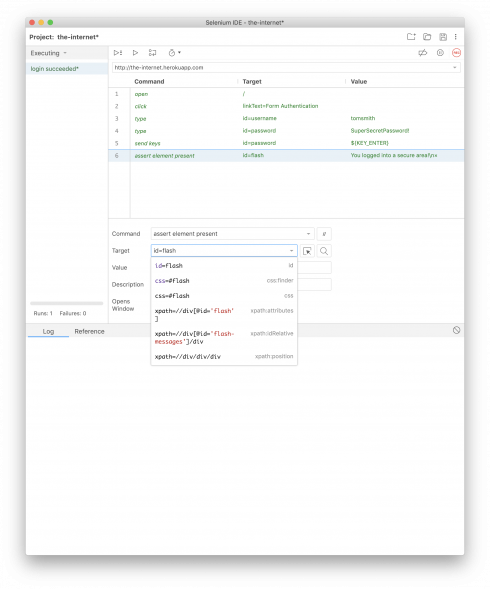
The open-source project for record and playback test automation is not giving up without a fight. After some recent revamping and advancements, the Selenium IDE project is back to try and win back the hearts of developers.
Selenium was first introduced in 2004. In 2006, the Selenium IDE was introduced as a Firefox browser extension. Unfortunately, after some time, Mozilla decided to eliminate the Selenium IDE integration in 2017, which the team says was detrimental to its existence. At the time, the team explained that the project lacked someone with the time and ability to move the IDE forward and leverage all the new technologies necessary to modernize it.
While it seemed like the Selenium IDE had been at a standstill since then, the project returned at the end of last year with a new contributor — Adam Carmi, co-founder and CTO of Applitools — and a rewrite of the project. “In August of 2017 Simon shared the bleak, hard news that as of Firefox 55 Selenium IDE would no longer work. Selenium IDE (or as we’ll refer to it from here on out – the Legacy IDE) was, and is, dead,” the Selenium team wrote in a post. “Since then quite a lot has happened with the IDE. We have a new version of it which we are referring to as… Selenium IDE!”
While the “new project” is still under development, it is available for use in Chrome and Firefox. According to the team, the difference between the legacy IDE and the rewrite is that the old IDE was a Firefox extension that relied on APIs no longer supported by newer versions of the browser. The new Selenium IDE is designed as a modern browser extension with support for Chrome and Firefox, with more modern browser support in the works. In addition, it comes with a new command-line tool for continuous integration servers and parallel test execution on multiple browsers and operating systems. Other new features include support for third-party integrations, setting breakpoints, pausing on exceptions, debugging features and the ability to reuse test cases.
As part of Carmi’s contribution, he has announced that Applitools will be adding an integration between the IDE and Applitools Eyes, its AI-powered visual testing and monitoring solution. “By integrating Selenium IDE and Applitools Eyes, QA teams (including manual testers) now have an easy and intelligent way to find more bugs faster, and make it dramatically easier to partner with front-end development teams to pinpoint and debug lines of code,” said Carmi. “Development teams now have much of the power of Selenium WebDriver, without having to learn how to write test automation code.”
On the roadmap ahead, the Selenium team plans to work on an extension UI, improving selectors, adding intelligent editing, exporting Selenium code in different languages, and more, providing consistent playback capabilities.






